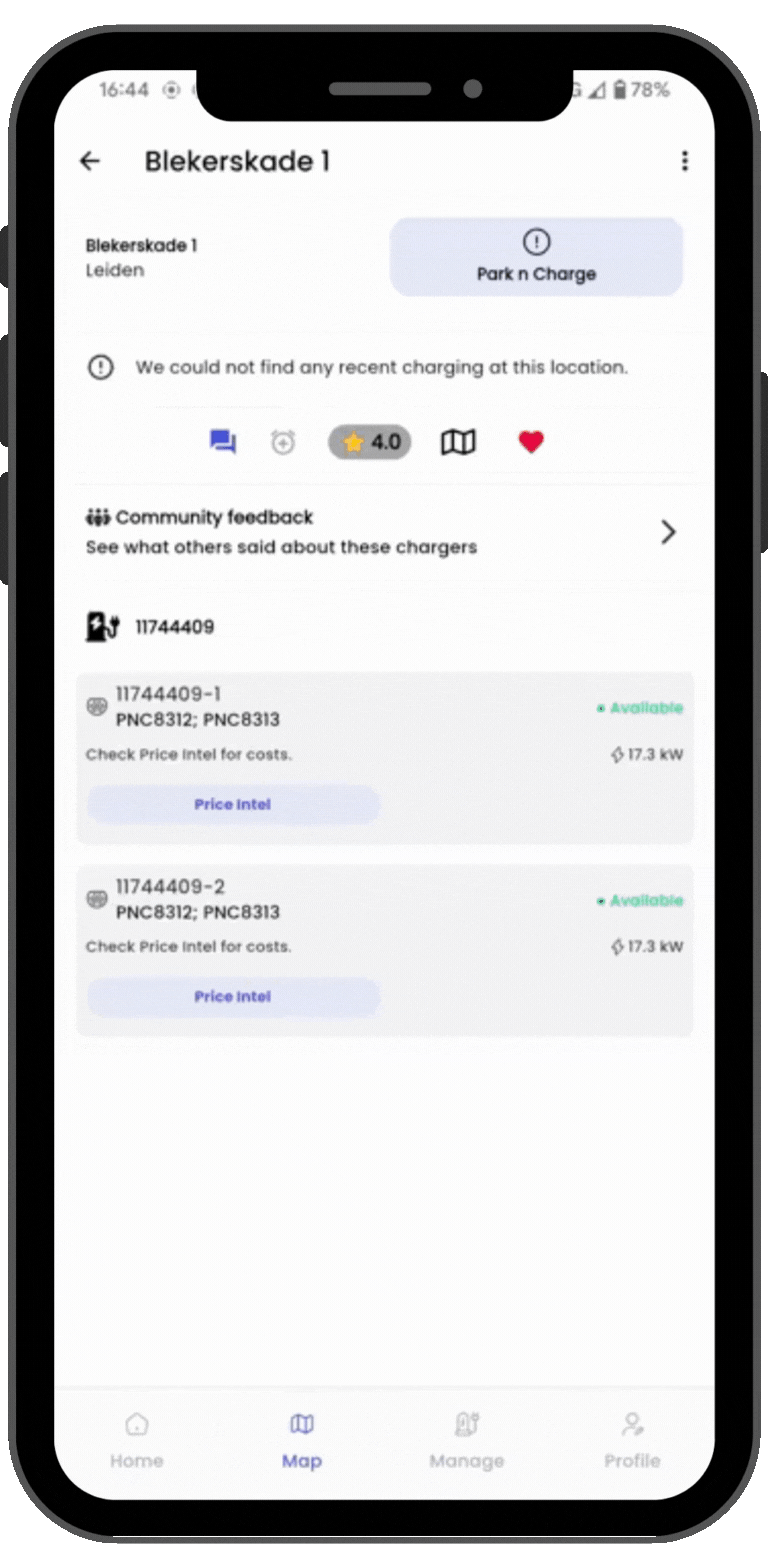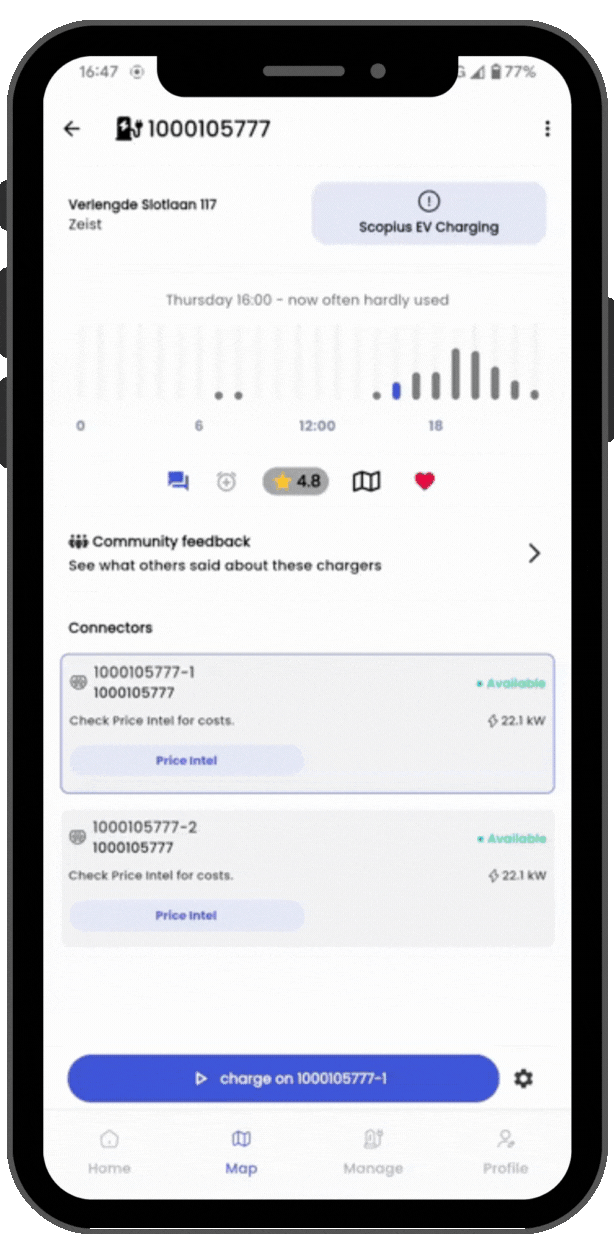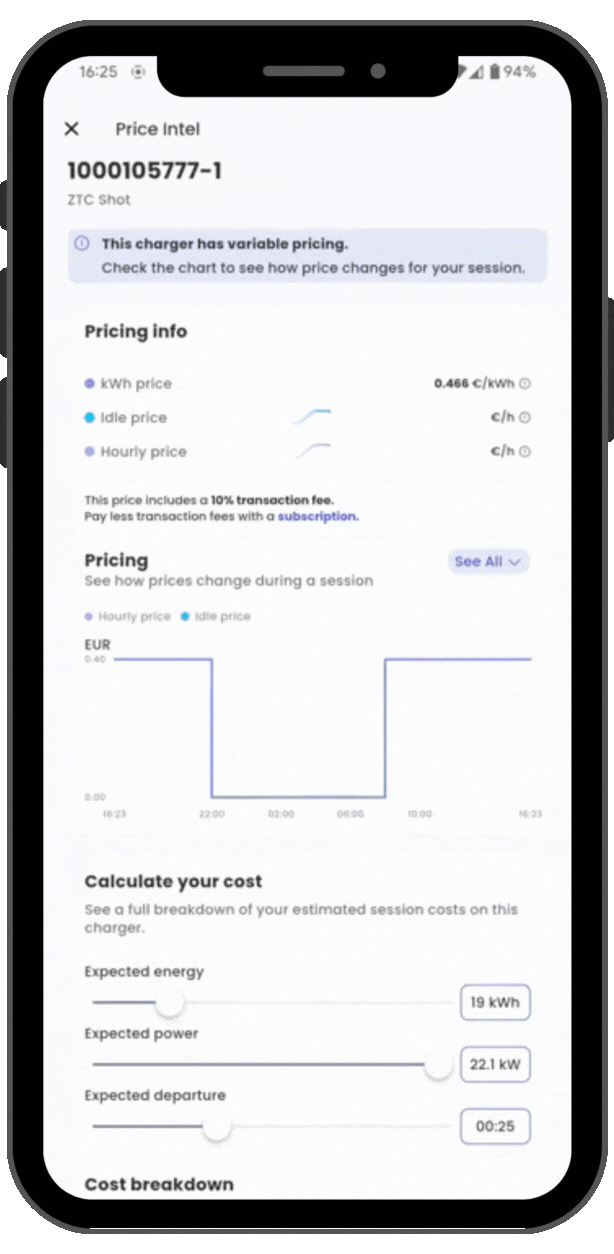Our most recent analysis looked into public charger pricing structures.
What did our experts find?
In many neighbourhoods, drivers only pay for energy, or in other words, a simple price per kWh.
However we spotted that in cities like Eindhoven, Tilburg and Groningen, drivers often need to pay hourly or idle costs on top of the cost of their energy. This is what we call complex pricing.
We created this interactive map to help you stay informed about which neighbourhoods commonly have complex pricing. What does it say about yours?
What to look out for on a charger?
- Compare charger prices in the neighbourhood to see what’s a fair price to pay.
- Before charging, check the charger’s pricing information.
Some charger owners and operators may charge you for:
- Starting cost: where you pay a flat fee to plug into the charger
- Idle price: that kicks in when your car is not charging anymore and still plugged in
- Hourly price: where you pay for every hour that your car is plugged in to the charger
On some chargers you may also see variable pricing. This is when your kWh, idle or hourly price changes during your session.
Tip: If you’re using a charger with an idle or hourly price – don’t stay longer than you need to.
Not all apps show such detailed charger pricing information, but we do in the Tap app! You can find all this information in Price Intel for every charger.
- See full pricing information: see the kWh price and if a charger has an idle, hourly price and starting cost.

- Visualise variable pricing: see how pricing changes during a session

- Full breakdown of session costs: what you pay in operator costs, transaction fees and VAT

Is complex pricing a bad thing?
Not necessarily. In March 2024, we saw the charger operator Allego introduce a ‘connection fee’ also known as an hourly price on some of the chargers across the country. They did this to encourage drivers to move their car when they’ve finished charging.
Pros for complex pricing:
- Operators and owners can more accurately reflect the costs of providing charging
- Encourage drivers to use chargers more efficiently
Cons for complex pricing:
- It can be confusing for drivers to know what they’re paying for
- Harder for drivers to predicts costs
While complex pricing isn’t necessarily bad, providers need to make sure that drivers have full transparency around pricing. Drivers can then make informed decisions on their charging. We take this responsibility seriously.
By solving this, there’s one less reason for drivers to stay in their dino-powered cars.
Resources, expertise, methodology
Sources:
The data was taken from live tariff data of public chargers on 11 June 2024.
Details:
- We only included postcodes that had at least 10 chargers
- Postcodes in the Netherlands approximately represents one neighbourhood. In dense urban areas this certainly represents a walkable area. In a less dense area, this would more likely be driving distance.
- We ranked all chargers within a postcode as 1 to 3 based on their price elements. 1: Energy price only 2: Energy price + hourly or idle cost 3: Energy price + hourly + idle cost
- The median rank of each postcode was reflected in the chart to provide a better representation of the most common combination of price elements for that neighbourhood.

